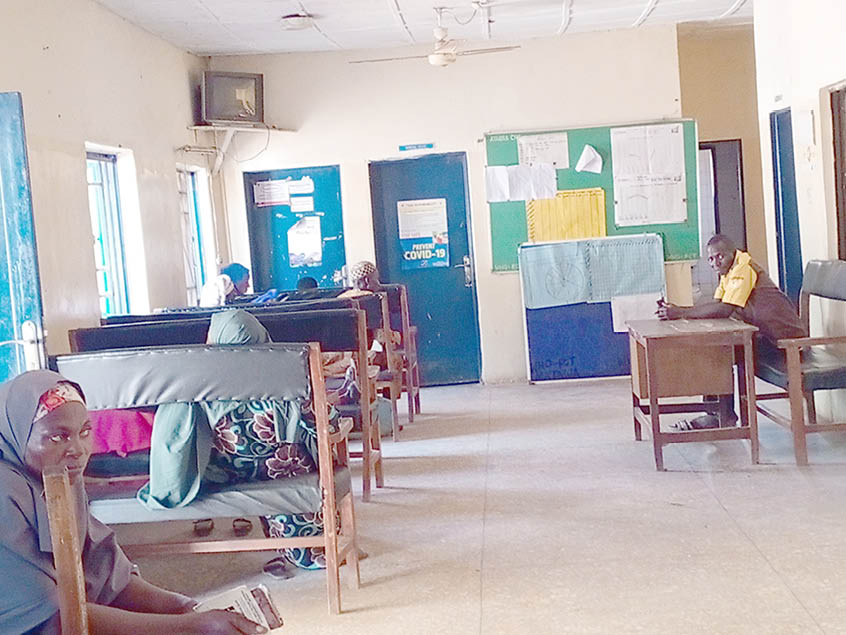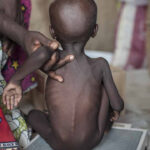On a typical hot Nigerian afternoon, you notice your four-year child is not her usual energetic self. She is lying down quietly in a corner of the room, looking tired. She feels warm to touch and so you immediately remove her clothes and use a towel to tepid sponge her tiny frame. Her appetite has declined over the past two days, agreeing only to drink Ribena after much coercion. You immediately administer paracetamol and make the decision to take her to the hospital.
At the crowded paediatric out-patient clinic, the doctor examines your child and requests a full blood count and a Rapid Diagnostic Test for Malaria. The RDT is positive for malaria but the result for the blood count will not be ready till the next day. You are given a prescription of anti-malaria medication and return home, worn out.
In the night, your child’s fever continues to rise steadily despite the tepid sponging, paracetamol and initial dose of antimalaria medicine. At around 2am, you and your husband rush to the emergency paediatric room of the tertiary hospital where your NHIA folder is registered. Her temperature is 38.70C and she appears very weak. The doctors say that she will require admission but that unfortunately, there is no bed space. All the beds in the paediatric wards are occupied. The best they can do for you is to give her a shot of diclofenac and refer you elsewhere.
That night, you are referred to a general hospital where you see children of all ages on hospital beds and plastic chairs. Again, the doctor on call, bleary eyed recites a line you are sure he has repeated hundreds of time before. You are sure of this because he says it so mechanically, without emotion: there is no bed space. At this point, you lose all sense of dignity and begin to weep and beg. Please let them admit your child, even if its on the floor. She has grown heavy in your arms and her breathing is becoming laboured. The doctor takes pity on you and agrees to treat your daughter only until morning. You spread your hijab on the tiled floor and sit down, watching in disbelief as your child’s vein is punctured and she starts receiving IV medication.
In the morning, her fever has reduced but she still appears weak. The morning doctors examine her again and make a diagnosis of severe malaria and sepsis. You are told she will require more tests and most importantly oxygen as her blood oxygen levels are low. However, they cannot administer treatment as you do not have a bedspace. Your husband begs and makes phone calls. Someone whispers to you to wait till after the doctors have finished ward rounds. Perhaps they will discharge some patients and space will become available. Another person tells you to try a private facility. You and your husband decide to wait a few more hours.
Your daughter’s fever starts to spike again you realise that you are running against time. You go to the nearest private hospital where unfortunately, you meet the same condition. The hospital has only 12 beds and they are all occupied. In tears, you rush back to the EPU of the hospital where you first presented and tell them about your night of horror. They empathise with you and ask you to wait while they discharge a few patients. While waiting, they institute emergency measures: oxygen, IV fluids and medication. Two hours later, while seated on the uncomfortable metal chairs in the emergency room waiting for bedspace, your child passes away in your arms.
In Nigeria’s emergency centres, there are too few beds and too many people, which is an obvious sign that demand has outpaced supply. Surprisingly, this overuse of emergency responders is not typically caused by people with non-emergent conditions using them excessively or inappropriately as we would like to think but rather as a result of an increase in the number of patients needing hospital and/or intensive care unit admission due to serious diseases or injuries. Accessing emergency care is becoming increasingly difficult due to overcrowding and a lack of beds, which compromises patient privacy and confidentiality, delays in receiving care and time-sensitive therapies, patient departure before care is finished, and staff and patient dissatisfaction.
The Nigerian healthcare system is divided into three levels that start from Primary Healthcare delivery which serves as a community entry point for local community members and handles minor and general cases; followed by the secondary healthcare delivery system which is an immediate healthcare level that offers more specialised care and is usually state-run. They include general hospitals, district hospitals, and comprehensive health centers. Tertiary healthcare however provides a highly specialized healthcare delivery through teaching hospitals, federal medical centers, and national laboratories. Tertiary health institutions handle medical and surgical conditions with higher-risk complications. Community members visit Primary Health Care [PHC] and if severe enough or beyond the capacity of the PHC, are then referred to the teaching hospitals that provide a multi-disciplinary approach and access to more facilities. There are also cases of self-referral to tertiary institutions as over 60% reportedly bypass the primary healthcare facilities to self-refer to higher healthcare levels in Nigeria. The result is the overloading of patients beyond the capacities of the referral facilities.
Tertiary health institutions are therefore plagued with a myriad of challenges especially as it relates to the provision of emergency health delivery efficiently. A common problem is a deficit between the Hospital Bed Capacity and the number of patients needing immediate attention and admission. This is not surprising knowing that Nigeria’s bed capacity stands at 0.9 hospital beds per 1000 people, a drastic discrepancy when compared to the global average of 2.3 hospital beds per 1000 people.
In the spectrum of medical care, emergency rooms continue to hold a crucial strategic role in every country. A vital aspect of healthcare, emergency department (EDs) are open 24 h a day, seven days a week, especially for those who need immediate attention. The ED is one of the few establishments that are constantly accessible and ready to help everyone. Its services are offered without respect to one’s social or economic standing and an appointment. Overcrowding and a lack of beds in Nigeria’s emergency tertiary healthcare facilities have been severe health issues for more than fifteen years!
The general public and medical experts are becoming more aware of Nigeria’s emergency rooms’ incapacity to handle the country’s present demand. The capability of Nigeria’s emergency health services has essentially been reached due to the escalating crisis of bed shortage and overcrowding. The resultant issue, known as urgent congestion and bed scarcity, now poses a threat to those who most require emergency services being able to access them.
What is the solution?
According to data available, Nigeria had 19,907 hospital beds in 2018, with a turnover rate per bed of 99.7% and an average duration of stay of 3.3 days. Hospital bed shortages unquestionably have a variety of detrimental effects on patients. Various studies have supported the fact that scarcity of beds led to the worst health outcome among patients before giving treatment which later results in higher mortality rates in the emergency department because complications could arise before healthcare attention is given. Additionally, a lack of hospital beds lengthens the time patients must wait in outpatient clinics. Another study’s findings suggest that clinicians’ early discharge of hospitalised patients was caused by a lack of available hospital beds. This is especially true in the labour rooms of government hospitals. Imagine the rude shock I received as a medical student when I realised that a woman could be discharged four hours after delivery just so that the bed could be given to another woman in labour.
Four hours fa! Whatever happened to overnight observation?
The recommendation will be discussed next week.

 Join Daily Trust WhatsApp Community For Quick Access To News and Happenings Around You.
Join Daily Trust WhatsApp Community For Quick Access To News and Happenings Around You.

